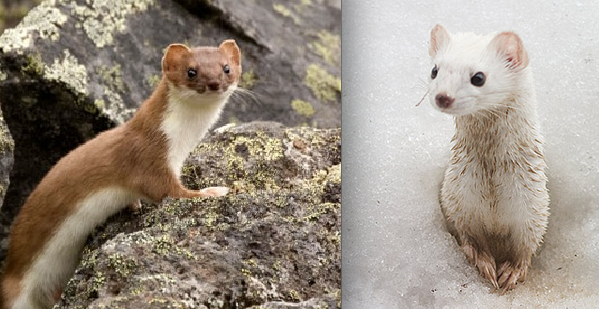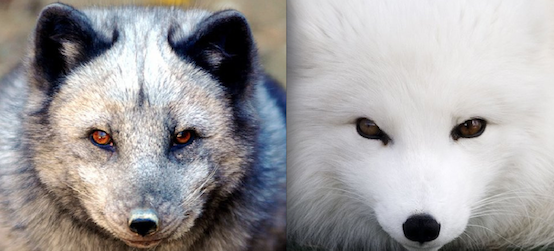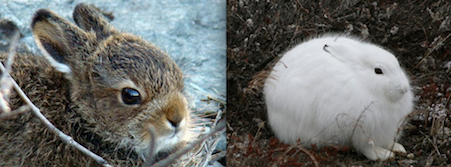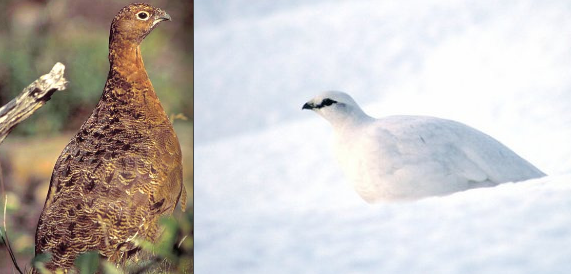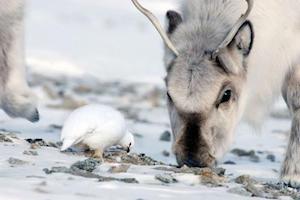
(Nicholas Lecomte, Norwegian Polar Institute)
Within the past half-century, atmospheric temperatures have been increasing, with ecological responses varying by region. The snow cycle influences organism habitats and ecological processes. Some herbivore species of mammals have adapted to live perennially in the Arctic by grazing under layers of snow (Figure 1). The recent increased rainfall in some regions of the Arctic can inhibit this winter grazing by coating snow with an impenetrable layer of ice. Numerous recent population “die-offs” of muskox on Arctic islands have occurred because of this development (IUCN, 2012). Additionally, numerous Arctic animals use thick snow cover as a burrow or den to protect themselves from the harsh winter environment. Microbial activity is abundant in snow, providing the ground surface with available nutrients for lower order species. These microbial species thrive in warming snow and cause discoloration of the snow crystals. This discoloration decreases the snow albedo, leading to more melt. Many primary producers are able to survive in the snowy Arctic landscape, including lichens. Lichens grow and survive within the layers of snow, giving them reasonable advantage over other species. They can survive for years within frozen surface layers. Snow also provides protection for vegetation, allowing plants to go dormant during harsh winter conditions. Overall, snow cover is vital for habitation and protection of many Arctic species. A slight precipitation shift could upset this delicate ecosystem balance (Vincent, et al., 2012; IUCN, 2012; NSIDC, 2013).
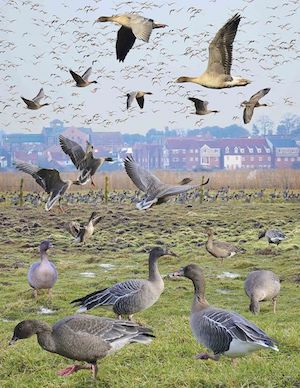
, 2011)
High Arctic Pink-Footed Goose
The snow dynamics of the Arctic is of particular importance to the Pink-Footed Goose (Figure 2). This species migrates to the high Arctic at specific times annually to complete breeding, nesting and feeding activities. Jesper Madsen et al. studied the effects of snow cover on Pink-Footed Geese in Svalbard. They found that the time of egg nesting, population of breeding individuals and reproductive success all correlated to snow cover condition. If individuals laid eggs early, their probability of success was higher than later individuals (success reduced by 3% per day). However, the availability of a suitable nesting habitat is inversely proportional to snow cover. In years of less snow cover, more geese were able to nest, with a higher rate of success. If snow cover is high, geese must nest later, depleting their built-up food stores, resulting in more feeding activities away from the nest and increased threat of predation. Overall, less snow cover is more advantageous for Pink-Footed Geese, however, the availability of food sources with decreased snow cover is unknown (Madsen, et al., 2007).
Arctic Fox
The Arctic Fox is built small and low with short, fur covered extremities. Although these fox species have characteristics that allow them to survive in -50°C weather, they often burrow into the snow for protection against winter storms. Arctic foxes have visually adapted to the snow-covered environment by altering their coat from a summer brown-grey to a winter white (Figure 3) (National Geographic , 2013).
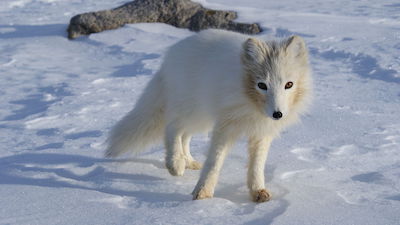
Many animals in the Arctic have visually adapted to life in the snow covered environment. Some organisms seasonally change colour to blend in with their surroundings (ermine, Arctic fox, Arctic hare, ptarmigan), while others are light coloured year-round (polar bears, snowy owl, Arctic lemming). Hover over photographs for image credit.
References
Snow Links
Material on this page was provided by Maren Pauly and Tristan Mills, Department of Geography, University of Waterloo.

